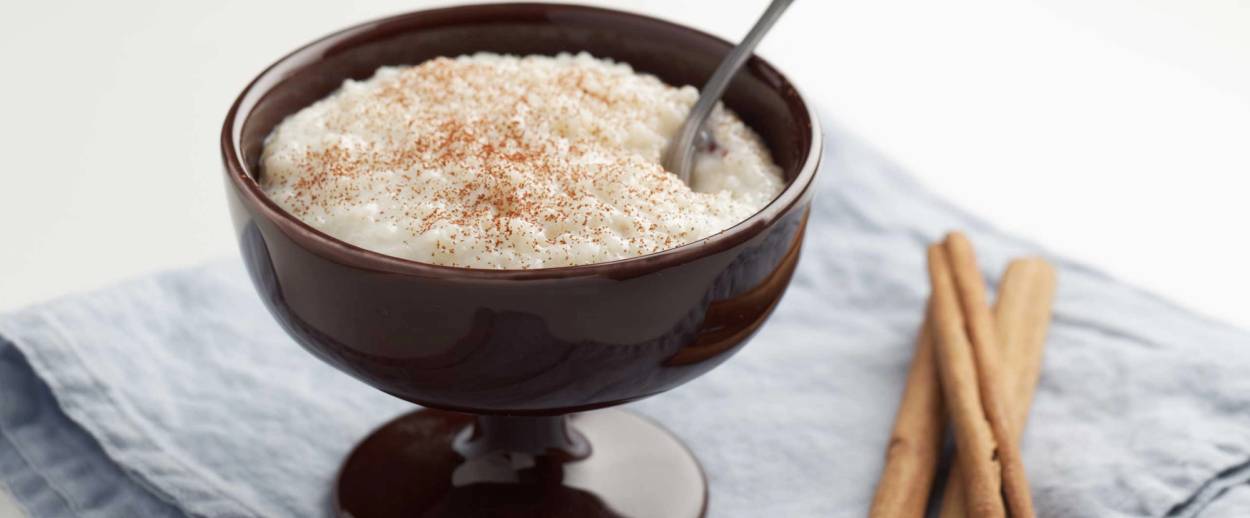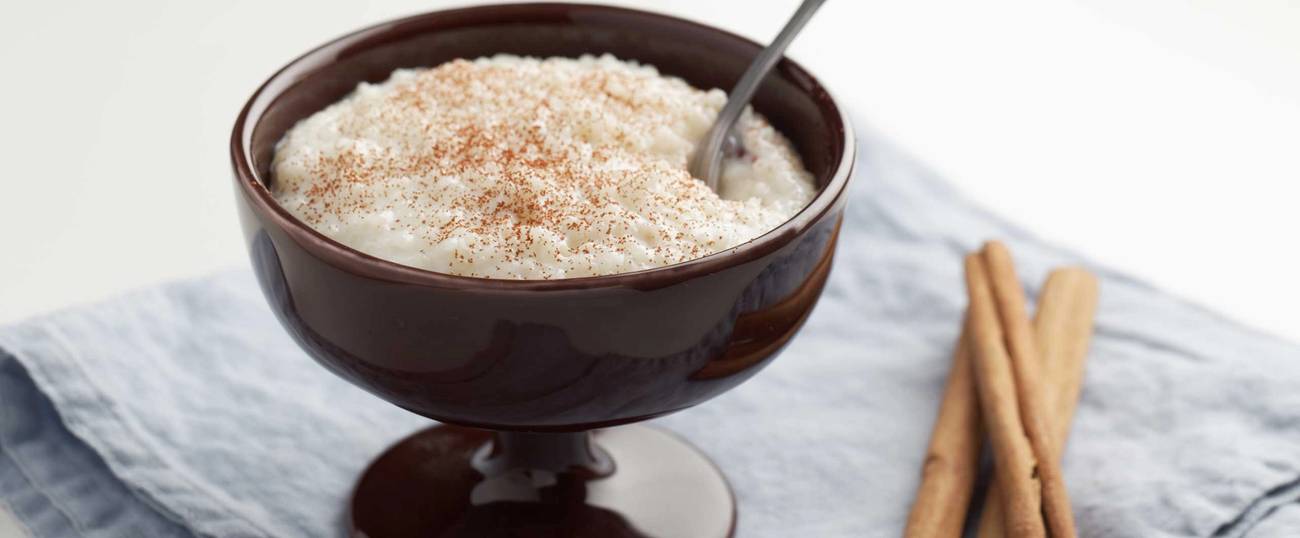Light and Sweet
The specific recipe varies from region to region, but rice pudding is an essential Sephardic dessert—and one that’s perfectly suited to Shavuot




I have a serious weak spot for rice pudding. Growing up in Chicago, where Greek diners are as ubiquitous as their menus are long, I often indulged in the dairy-filled confection. (To be honest, whenever life finds me at a diner, I still do.) Thick enough to cling to the spoon, dotted with jammy raisins, and topped with a cap of whipped cream and cinnamon it was perfect every time—ambrosia served in an unassuming ceramic bowl.
Because I primarily ate rice pudding at these diners, the dish always felt more connected to my Midwestern roots rather than my Jewish heritage. But while researching dishes to include in The Jewish Cookbook—my forthcoming collection of global Jewish recipes—I discovered that rice pudding has a definitive place in the Jewish kitchen, particularly within Sephardi cuisine.
“If there was an everyday Sephardi dessert, this was it,” writes Claudia Roden in The Book of Jewish Food. Indeed, for generations of Jews, rice pudding was (and continues to be) comfort food par excellence—served either warm or chilled to the delight of children and grown-ups alike. The sweet pudding does not have the same Jewish resonance as Purim’s hamantaschen, Hanukkah’s sufganiyot, or other desserts closely associated with a particular Jewish holiday. But its power is in its ubiquity. Rice pudding is as likely to grace the breakfast table (on weekdays and after synagogue Saturday morning) as be included in a Shavuot spread, when dairy dishes are commonly served, or as part of the Yom Kippur break-fast meal.
Rice pudding is part of a larger family of milk-based puddings thickened with grains like semolina and bulgur. It is widely consumed across Sephardi communities and goes by different names, including arroz con leche and riz bi haleb (“rice with milk” in Spanish and Arabic, respectively) and, among India’s Bene Israel community, kheer (derived from the Sanskrit word for milk). In The New Mediterranean Jewish Table, Joyce Goldstein writes: “In earlier times milk was so valuable that Sephardic cooks mixed ground almonds with boiling water to make almond milk as a substitute.” While cow’s milk is readily available today, the ancient almond milk approach feels remarkably contemporary—as well as kosher friendly.
“I love rice pudding because it’s comforting and brings me back to my childhood,” said Jennifer Abadi, a Sephardic culinary instructor and author of the cookbooks Too Good to Passover and A Fistful of Lentils. “It is also a great way to use up leftover cooked rice, which is likely how it first evolved as a recipe.”
Variations of rice pudding abound, both in flavorings and composition. Judeo-Spanish cooks include scraped vanilla beans or vanilla extract, while Middle Eastern versions are typically perfumed with rose or orange blossom water and sometimes contain mastic, an aromatic resin derived from tree bark. “[Mastic] gives marvelous flavor which we Oriental Sephardim are very fond of,” writes Roden, whose family is Egyptian. “But you must use very little, for otherwise the taste becomes unpleasant.”
Rice pudding is typically made with whole rice grains, but Greek Jews also love a distinct-but-related dessert called sutlach, which is thickened instead with finely ground rice flour. Turkish Jews call the same dish muhallebi (“made with milk” in Arabic)—a near-twin of malabi, the panna cotta-like milk-and-cornstarch pudding that has become ubiquitous in Israel. Indian kheer is made with basmati rice, which is considered a superior variety of the grain. The pudding is simmered with cracked cardamom pods and sometimes colored with a pinch of golden saffron, giving it a refined and almost regal flavor. Jewish cooks in Aleppo, meanwhile, created a honey-sweetened version (riz b’asal) cooked with water instead of milk so it could be served after meat meals.
While rice pudding is prized as a quick stovetop dish, some Jewish cooks also prepare a baked version. In Cairo, Roden writes, there was once a “bakery to which people brought their milk puddings to be baked, and these came out with a golden-brown crust.” Even in Ashkenazi cuisine, where rice is far less commonly eaten than in Sephardi and Middle Eastern Jewish cooking, sweetened rice kugels—essentially baked rice pudding—were once served, like noodle kugels, as both a side dish and a dessert.
Today Abadi views rice pudding as a canvas for experimentation, topping bowls with pine nuts or trying out different rice varieties from black and brown to sticky sushi rice. In a similar spirit, my cookbook Modern Jewish Cooking includes a recipe for jeweled rice pudding. The base is fairly straightforward: milk, rice, sugar. But the bowl is festooned with bright pomegranate seeds, candied orange peel, chopped pistachios, dried apricots, and other treasures typically found in the Persian side dish. I am planning to serve the regal confection for Shavuot. After all, rice pudding may not be a part of my own Jewish heritage or experience, but it is definitely part of my soul.